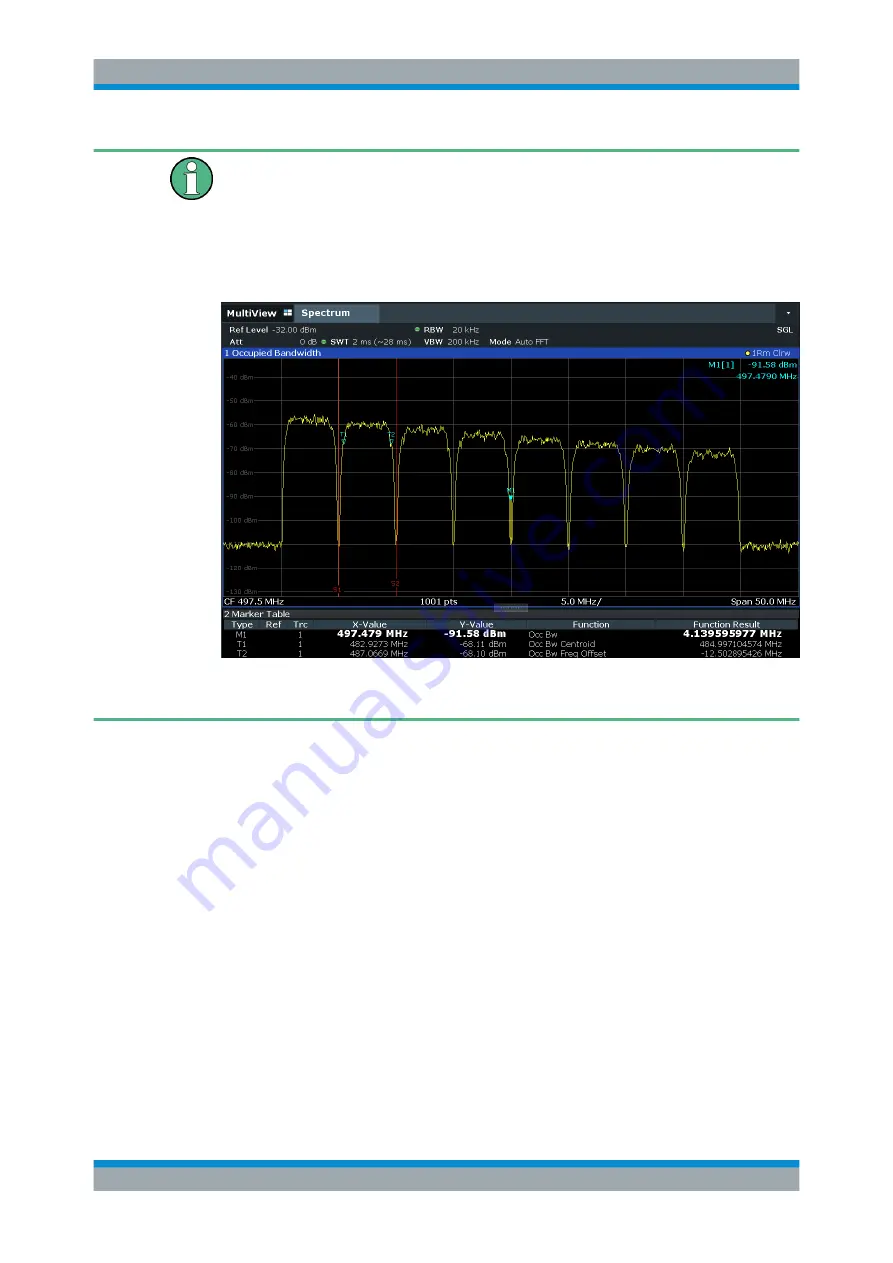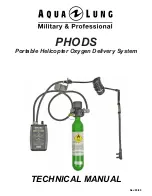
Measurements and Results
R&S
®
FSVA3000/ R&S
®
FSV3000
200
User Manual 1178.8520.02 ─ 01
OBW within defined search limits - multicarrier OBW measurement in one sweep
The occupied bandwidth of the signal can also be determined within defined search
limits instead of for the entire signal. Thus, only a single sweep is required to determine
the OBW for a multicarrier signal. To do so, search limits are defined for an individual
carrier and the OBW measurement is restricted to the frequency range contained
within those limits. Then the search limits are adapted for the next carrier and the OBW
is automatically recalculated for the new range.
For step-by-step instructions, see
"How to determine the OBW for a multicarrier signal
Prerequisites
To ensure correct power measurement, especially for noise signals, and to obtain the
correct occupied bandwidth, the following prerequisites and settings are necessary:
●
Only the signal to be measured is displayed in the window, or search limits are
defined to include only one (carrier) signal. An additional signal would falsify the
measurement.
●
RBW << occupied bandwidth (approx. 1/20 of occupied bandwidth, for voice com-
munication type: 300 Hz or 1 kHz)
●
VBW ≥ 3 x RBW
●
RMS detector
●
Span ≥ 2 to 3 x occupied bandwidth
Some of the measurement specifications (e.g. PDC, RCR STD-27B) require measure-
ment of the occupied bandwidth using a peak detector. The detector setting of the
R&S
FSV/A has to be changed accordingly then.
Occupied Bandwidth Measurement (OBW)
















































